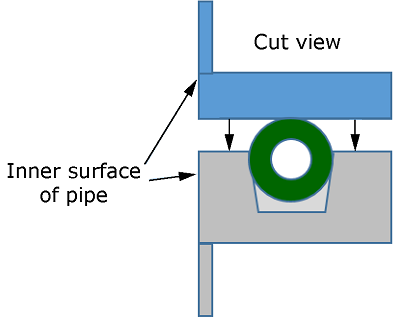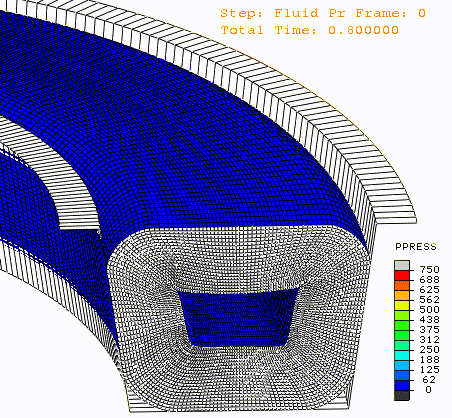Application description
This example demonstrates fluid pressure-penetration loading in Abaqus for an O-ring seal simulation. O-rings are widely used in machine design to seal connections that require the transmission of fluid and gas. It is crucial for the design to ensure that the seal contains the fluid under operating conditions. The simulation tracks the evolution of the region exposed to fluid and applies surface pressure approximating the effects of fluid to that region without directly modeling the fluid. The purpose of this example is to provide perspective on modeling methods. Subsequent design iterations (not discussed in this example) might lead to significant design improvement.
Geometry
Figure 1 shows a schematic diagram for a scenario in which an O-ring helps seal a pipe connection. During installation, the O-ring is compressed into the seal groove in the lower flange to create a tight and leak-proof seal, as shown in the cut view of Figure 2.
A simplified model is employed that focuses on the interactions between the O-ring and its surrounding surfaces where contact and fluid pressure loads develop. The O-ring is relatively soft; therefore, the surrounding parts are modeled as rigid surfaces for the preliminary study summarized in this example. Figure 3 shows an axisymmetric model in swept view, including the deformable O-ring and rigid surfaces representing the flat upper flange and the bottom flange with a channel. Figure 4 shows the relevant dimensions. The O-ring has an inner diameter of 4 mm and an outer diameter of 8 mm. The seal groove has a depth of 6.1 mm and top and bottom widths of 8.2 mm and 6.6 mm, respectively. The center of the O-ring is 20 mm from the axis of revolution.













